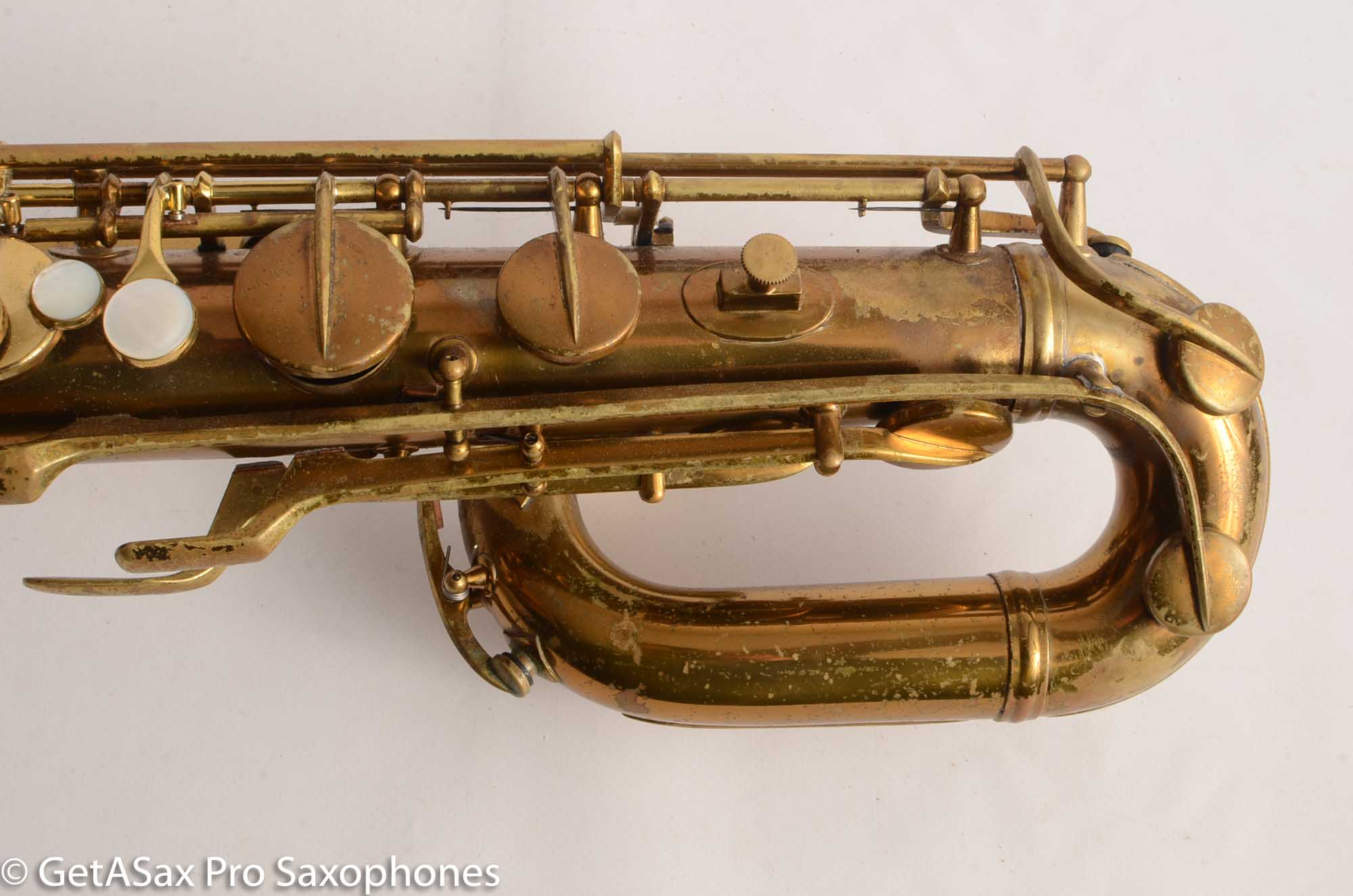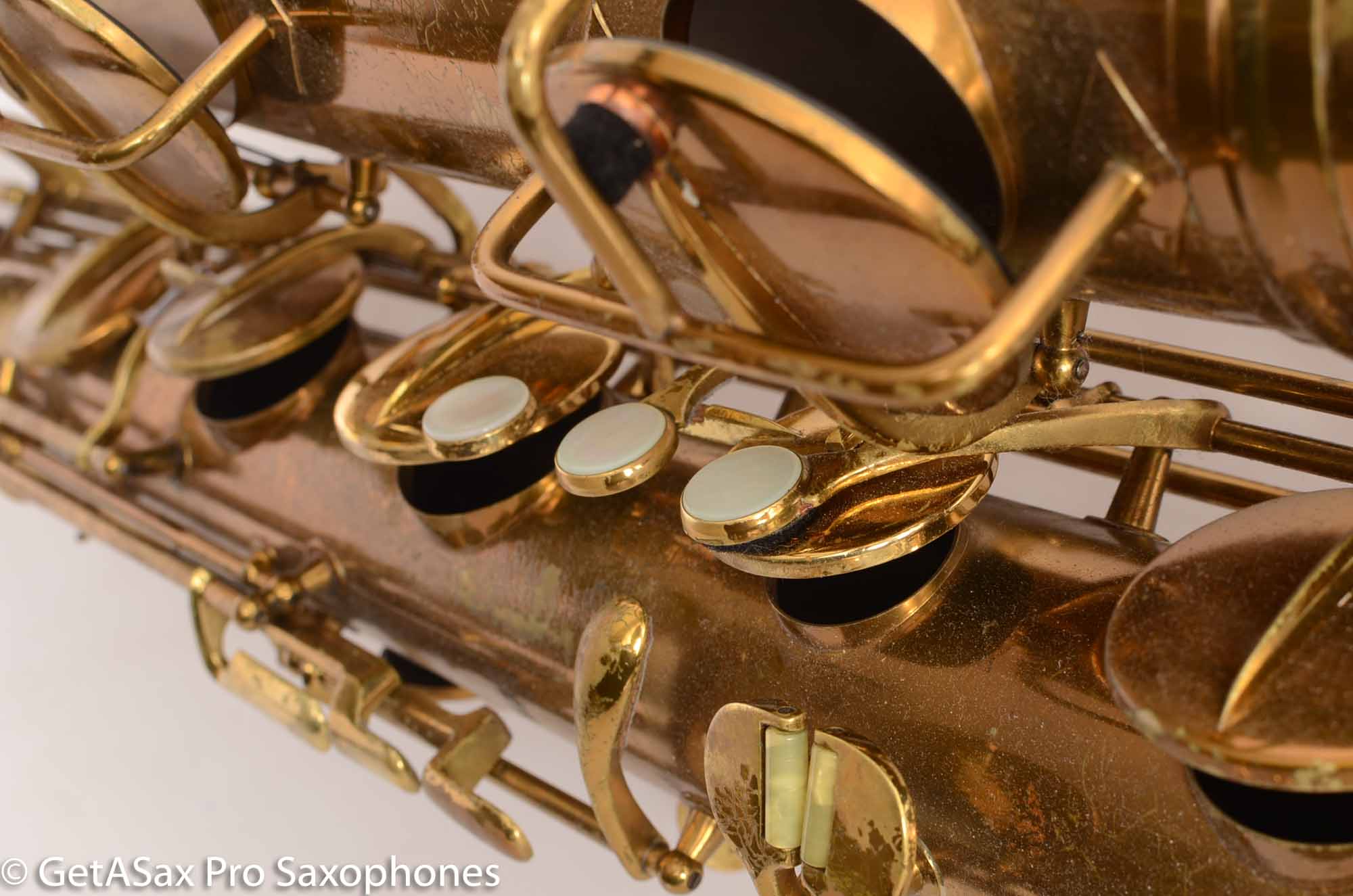
Buescher went on to develop the Aristocrat and the 400.
PAN AMERICAN ALTO SAXOPHONE 48M PADS PROFESSIONAL
In fact, those designs were so successful that student-line saxophones based on them continued to be made long after newer designs appeared to serve the professional market. “Low Pitch” Horns Worth Consideringīuescher’s “True-Tone” saxes and Conn’s New Wonder saxes are examples of these early reengineered horns. That’s why we have a “beginning” date range for our definition of “Vintage,” although you could, technically find saxophones dated much earlier. Today there’s really no reason to own a “High Pitch” horn except as a collectible or maybe as a lamp stand.
PAN AMERICAN ALTO SAXOPHONE 48M PADS SERIAL
Since there were still “High Pitch” horns around - even on store shelves - for the first few decades, companies stamped either the words “Low Pitch” or the letter L near the serial number.Īlso, because the horns needed to be reengineered anyway, many lines also offered other improvements, such as larger bores to provide a richer or fuller sound. Those horns are compatible with modern bands, orchestras, and pianos. For others it ends as late as 1978, but it’s a good rule of thumb.Īlthough many saxophones were sold before 1915, many of those are pitched higher than modern instruments, so it’s very difficult to play even the best ones in tune with modern pianos, orchestras, or bands.īy 1918, most saxophone manufacturers had gone exclusively to “Low Pitch” horns (Conn started in 1914). For some brands “Vintage” starts as early as 1914 or as late as 1918.

Why does “Vintage” start with 1915 and end with 1975?Īdmittedly, those dates are a little arbitrary. They don’t actually go together as well as you might think.

When asked why he doesn’t go to Hollywood instead, he says, “I don’t want to do it the easy way.” That’s right up there with the old joke about the guy trying to break into the movies in Hoboken, Pennsylvania. Occasionally I run into someone who doesn’t play saxophone and wants to learn but thinks it would be cool to learn on a vintage horn. You’ll also find our article Shopping for C Melody Saxes helpful. If you’re looking for a used C Melody, you may find this article helpful, since most C Melodies - even those being made today - are based on early-20th-century designs. To start there, please jump to our Evaluating Used Saxophones article.

If you want to learn saxophone and you don’t want to buy a new one (I don’t blame you), consider looking at “modern” saxophones, which started being made in the mid-1970s, and many of which can be made playable without a herculean effort.

That said, you probably don’t have any business buying a vintage saxophone (roughly 1915-1975) unless you already play saxophone and have some idea what you’re getting into. And many surviving recordings of swing, jazz, rock, and even orchestral saxophones recorded before 1960 were made with those same horns. Think about this - before 1975 all saxophone players “cut their teeth” on saxes that were based on pre-1920 designs. Frankly they made things better in those days.Īs a saxophone player who knows something about playing, teaching, and maintaining saxophones, I would rather see a child start out on a properly restored quality vintage horn than the $200-500 “instructor-approved” junk coming out of China today. What’s more, almost all 1914-1963 vintage horns could be restored to playability, if all the pieces are still there and they haven’t suffered catastropohic damage. Nearly all American, European, and even Japanese saxophones made before 1980 are more solid than the average saxophone coming out of China today. I love vintage saxophones that have been lovingly restored to playability, if not to their original patina.


 0 kommentar(er)
0 kommentar(er)
